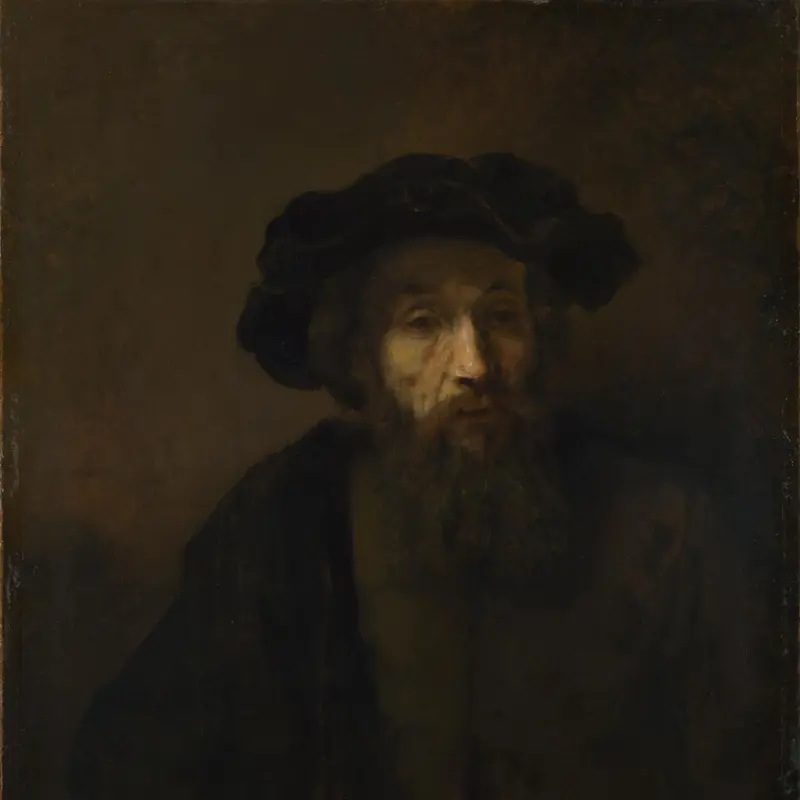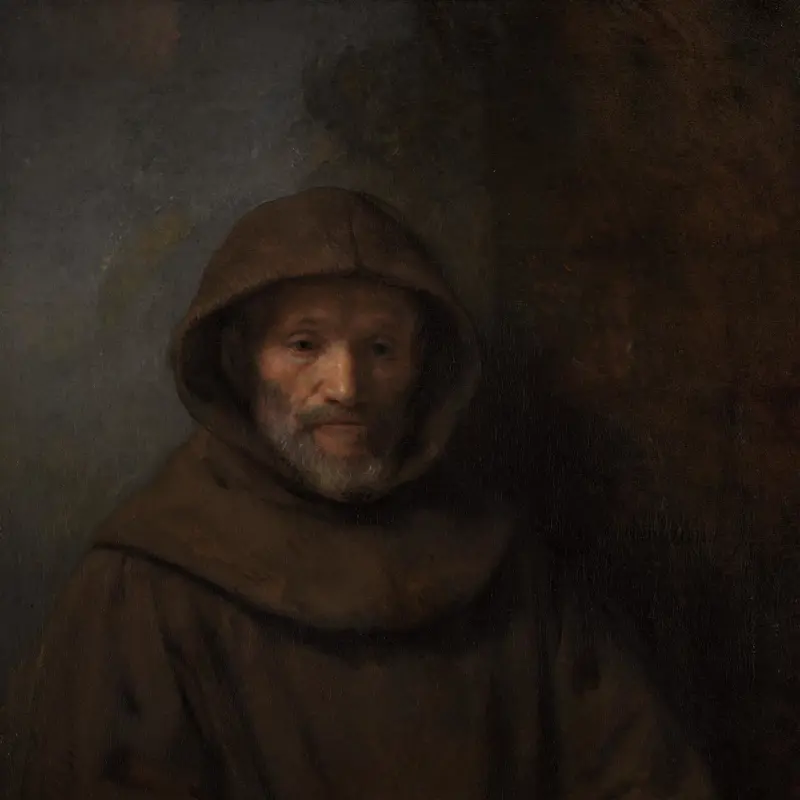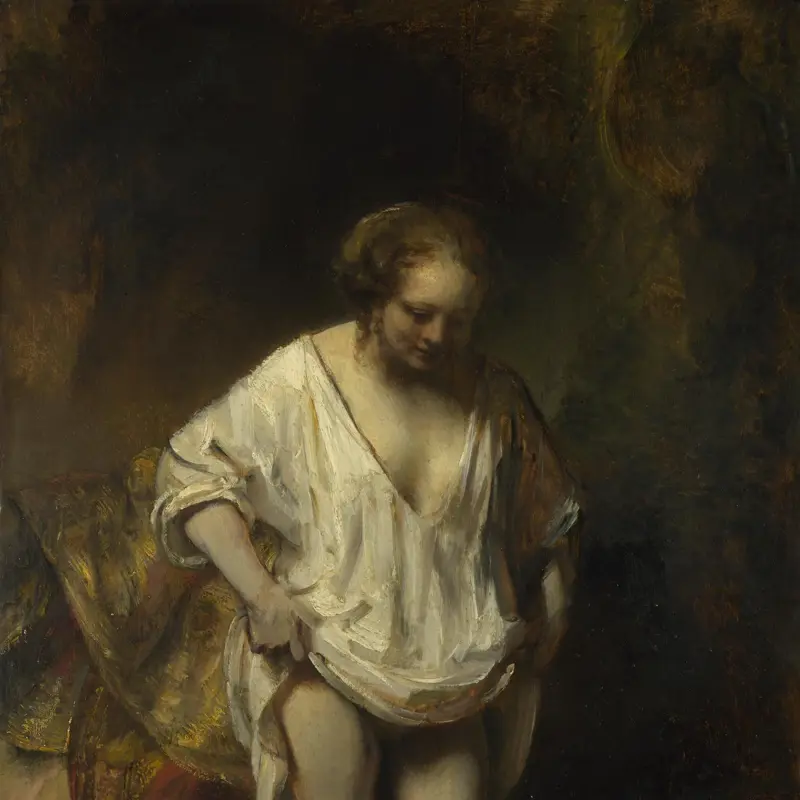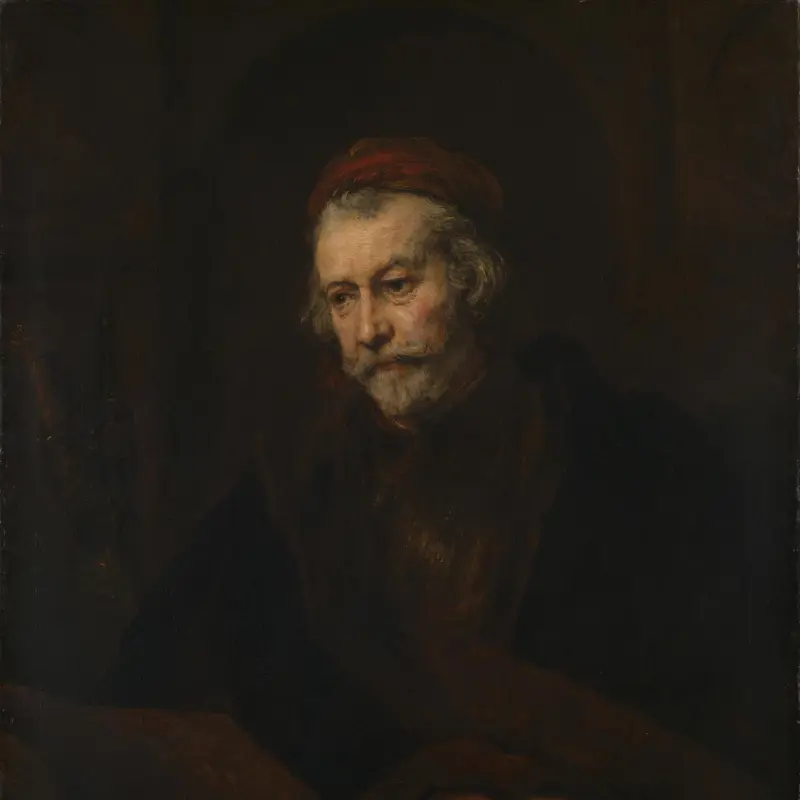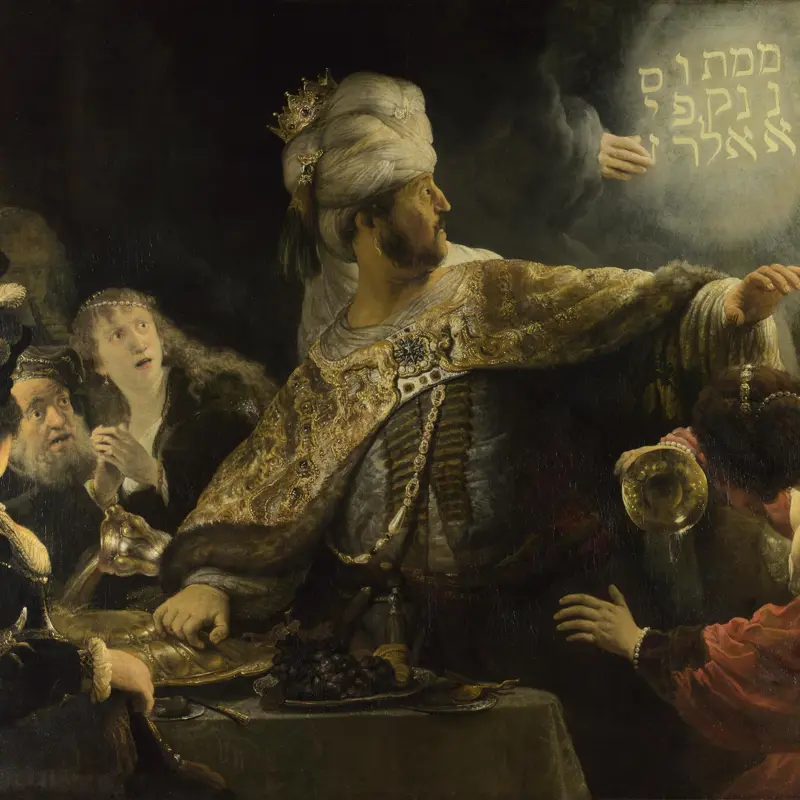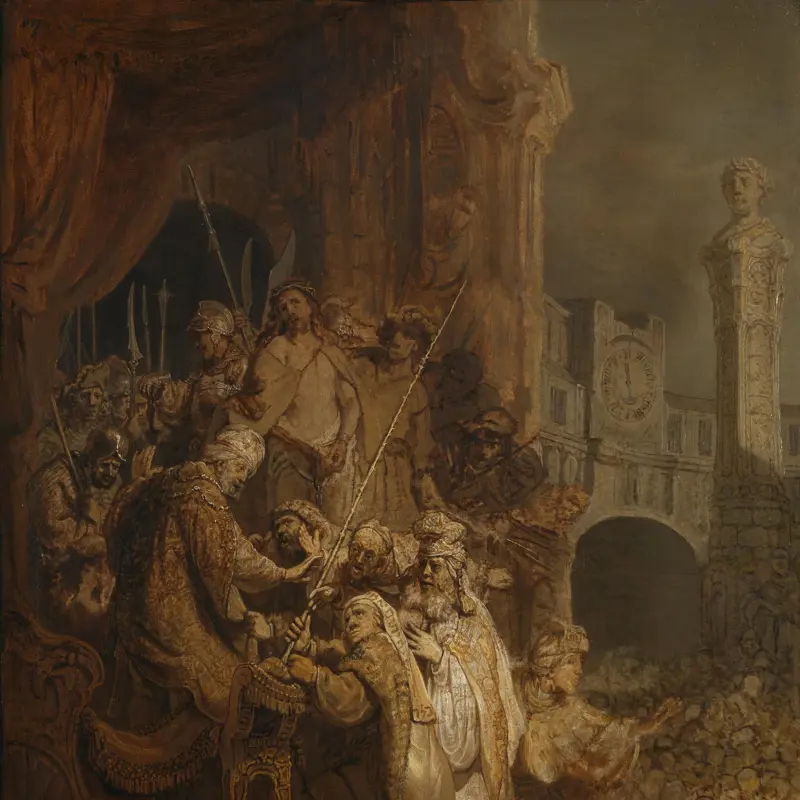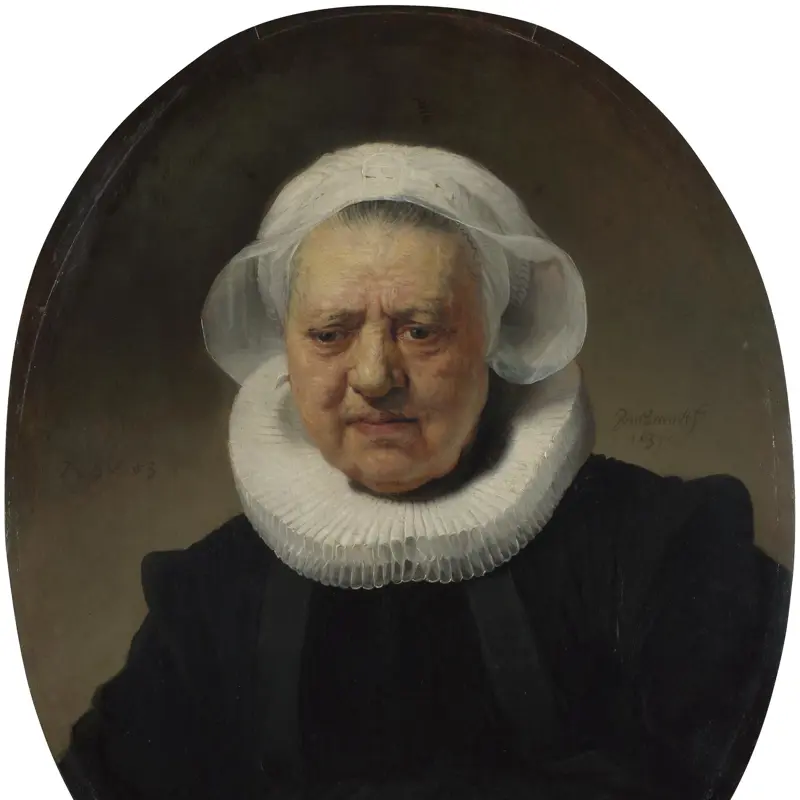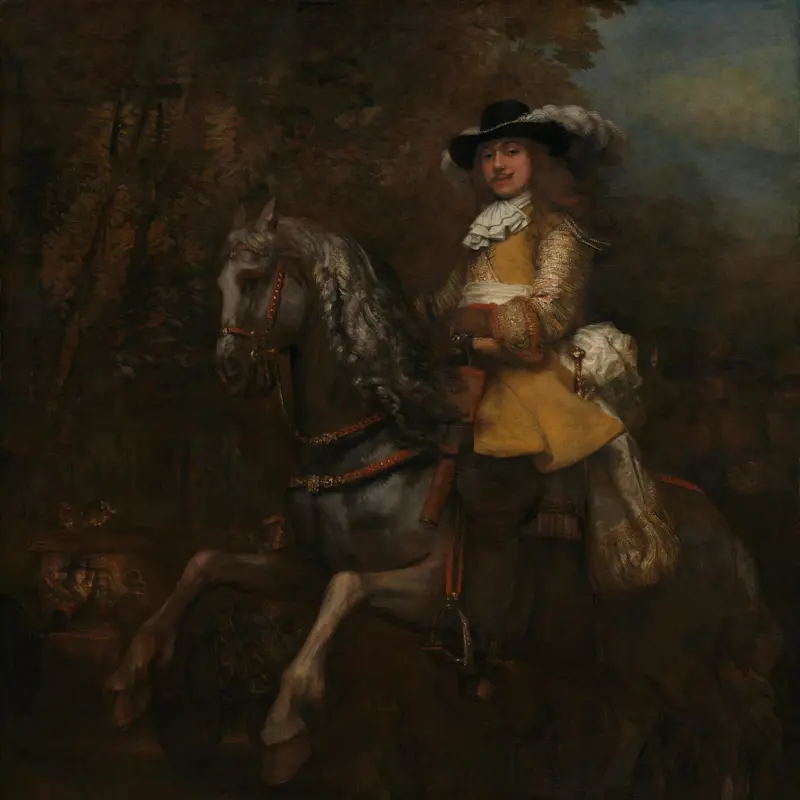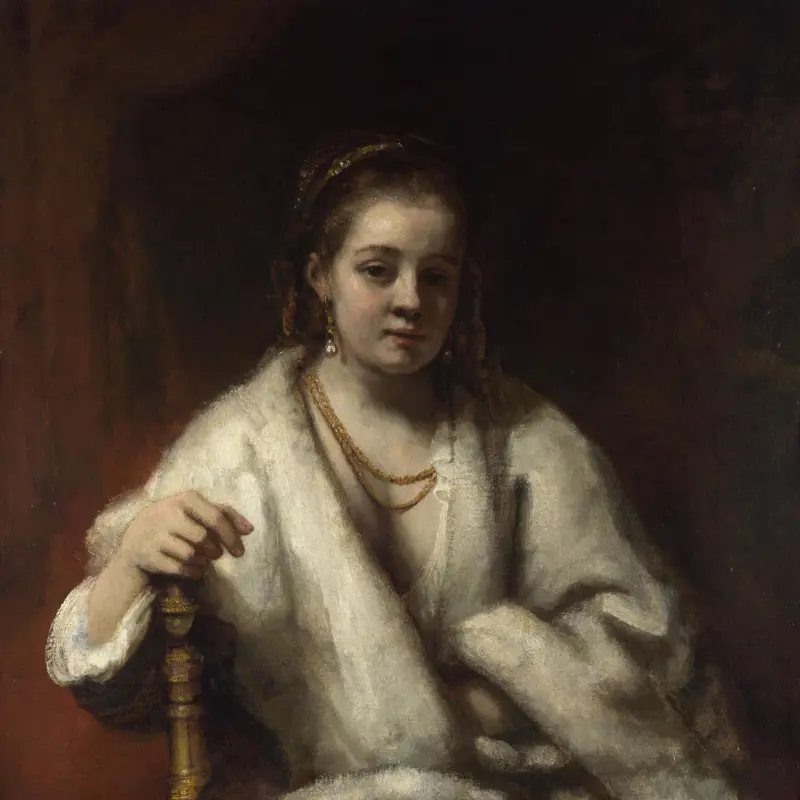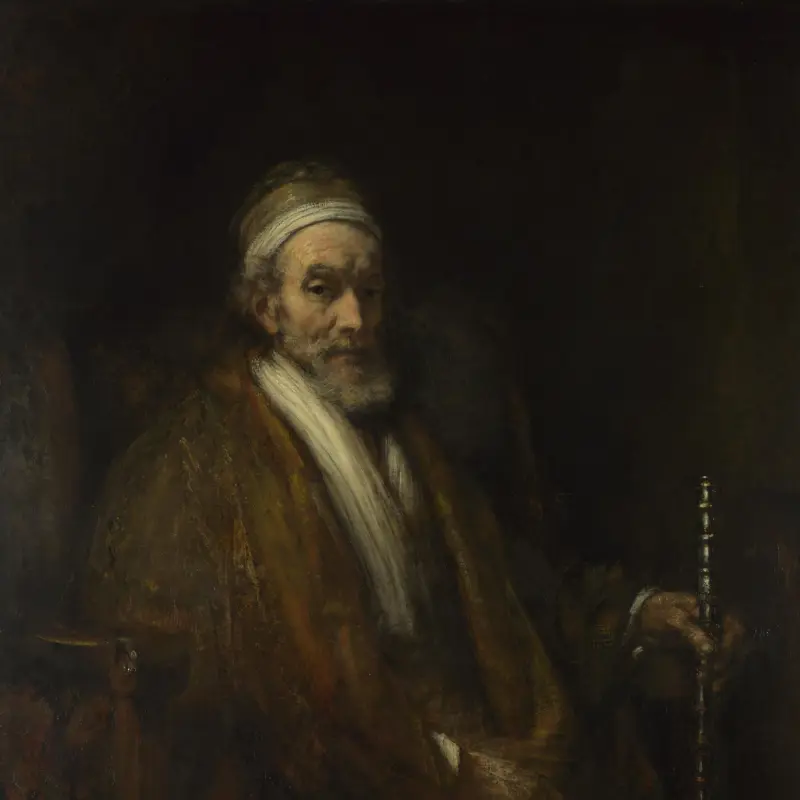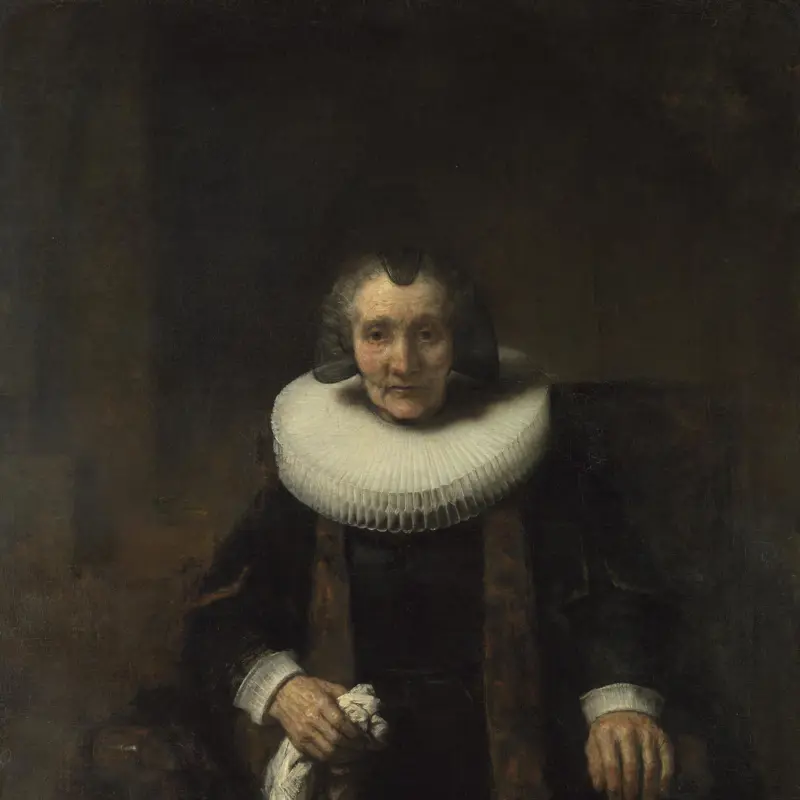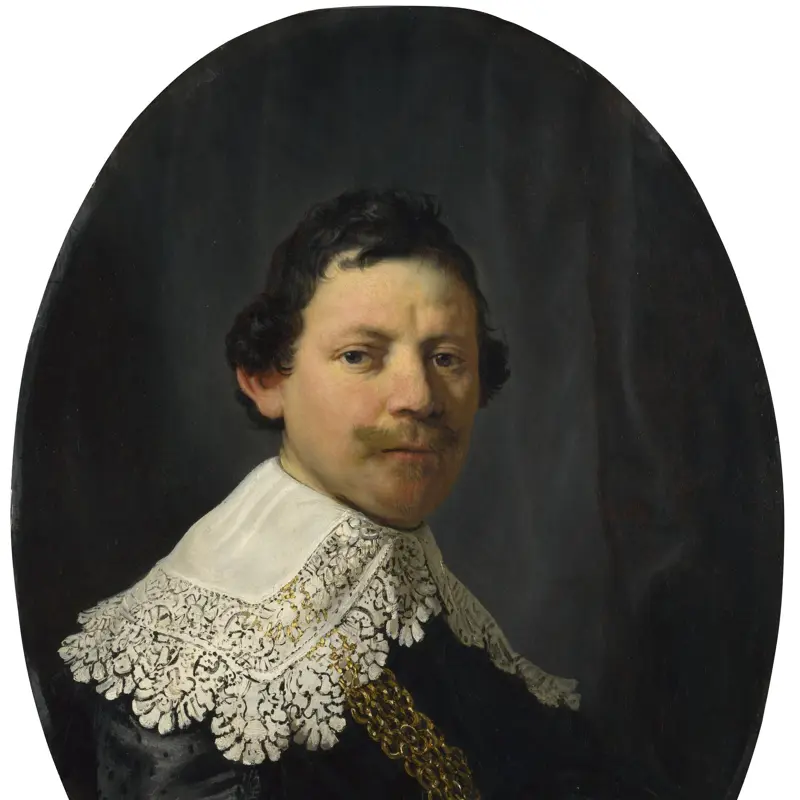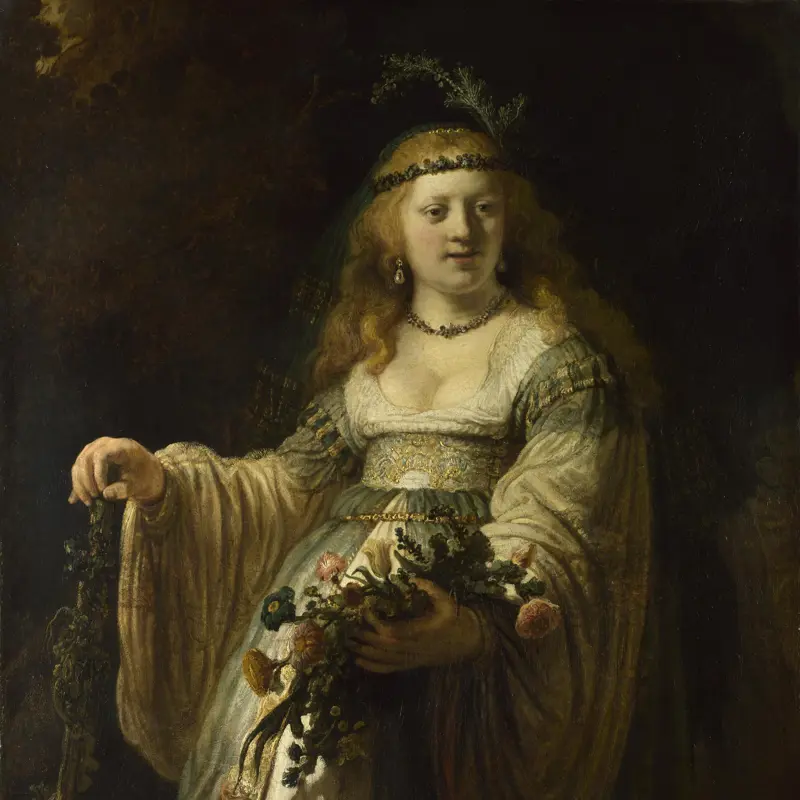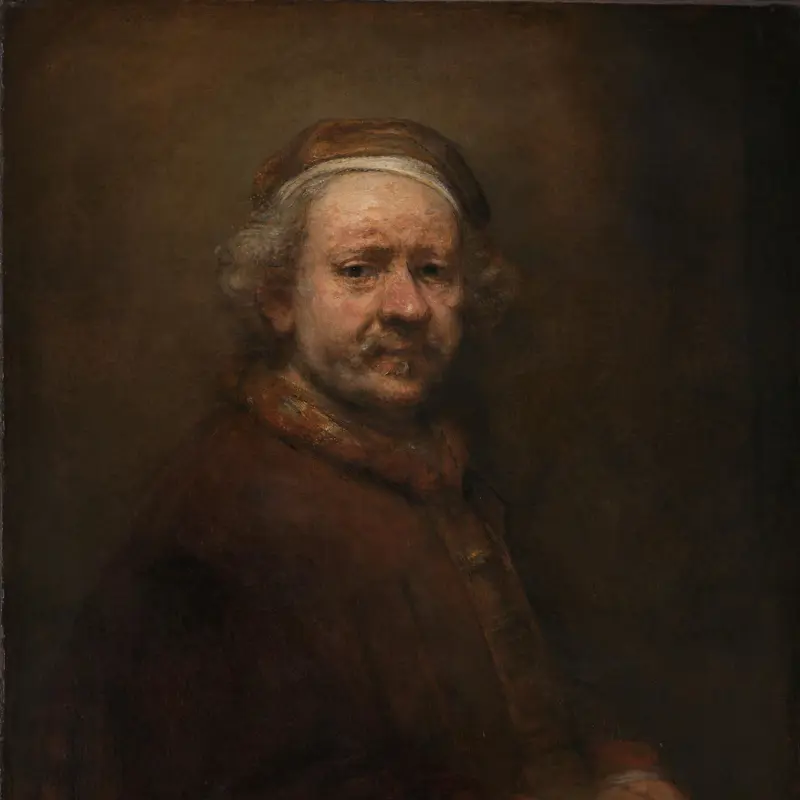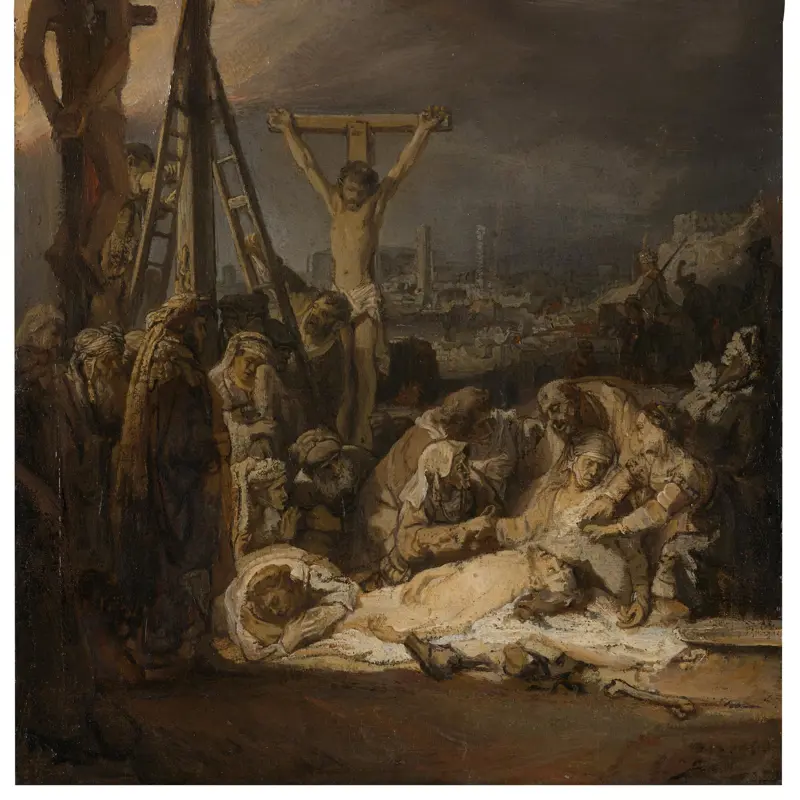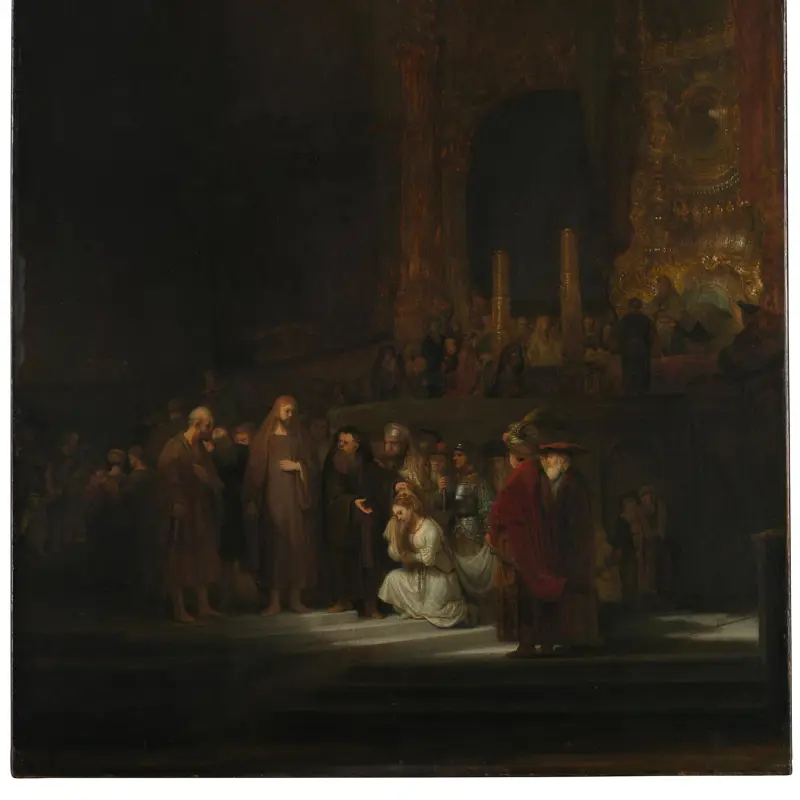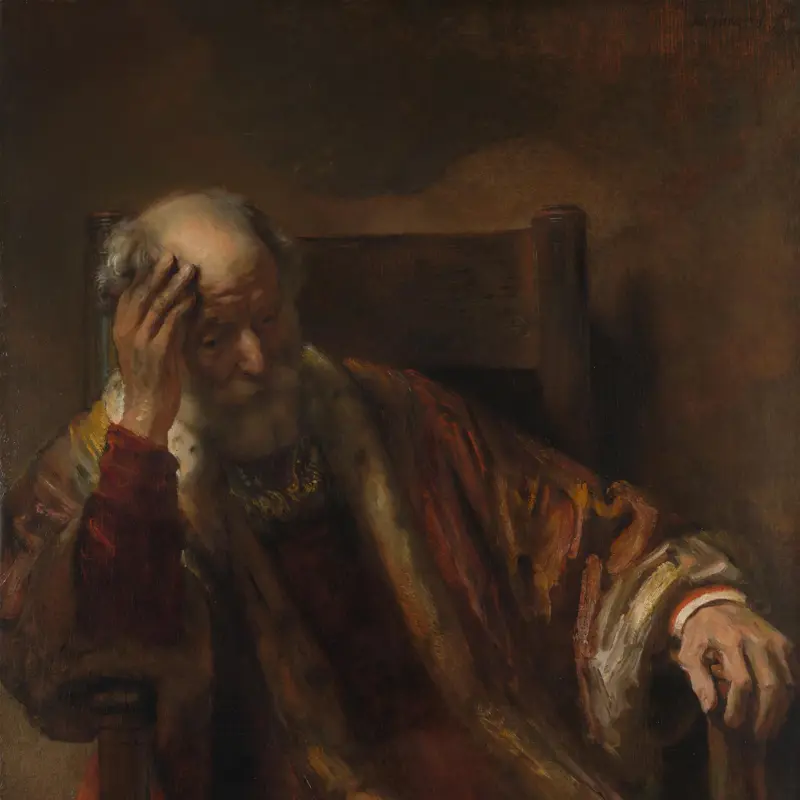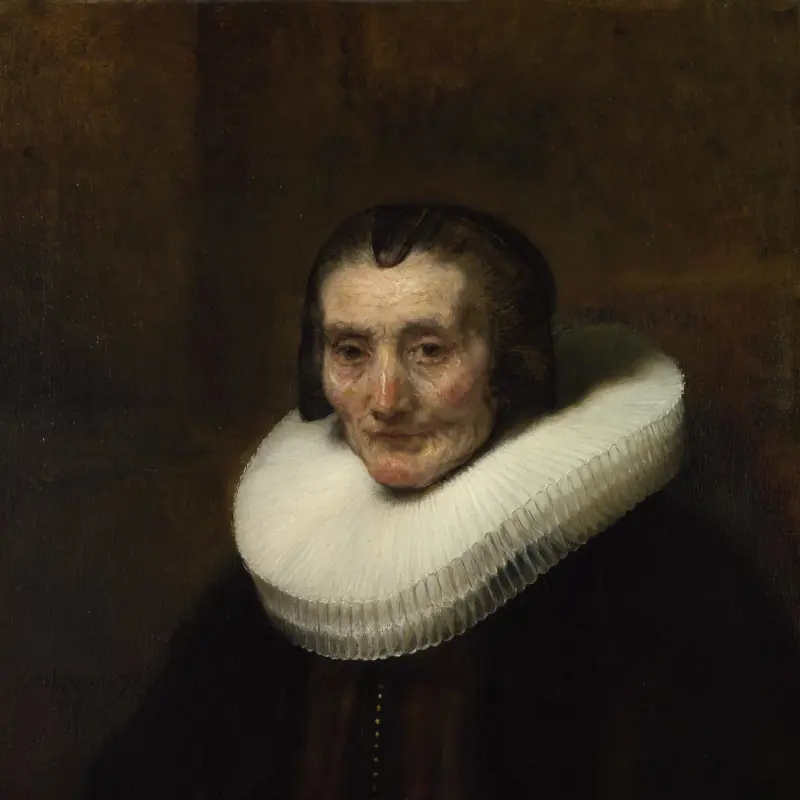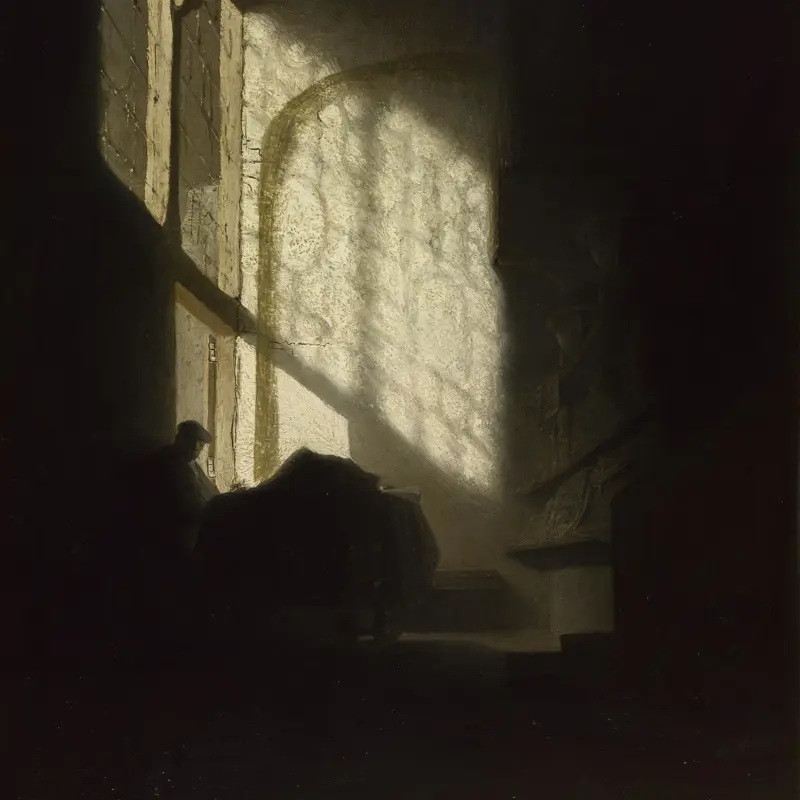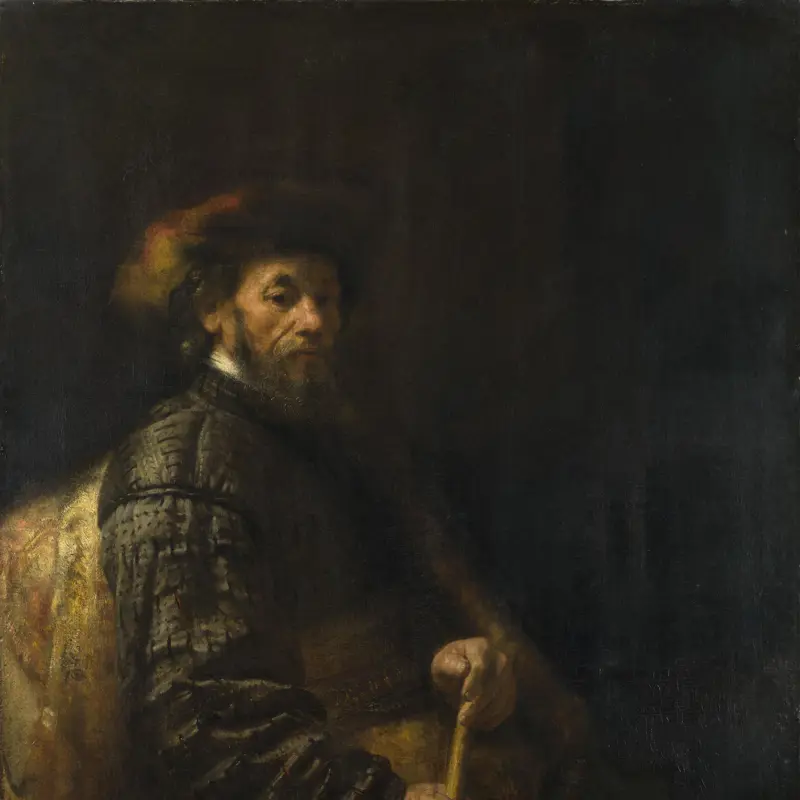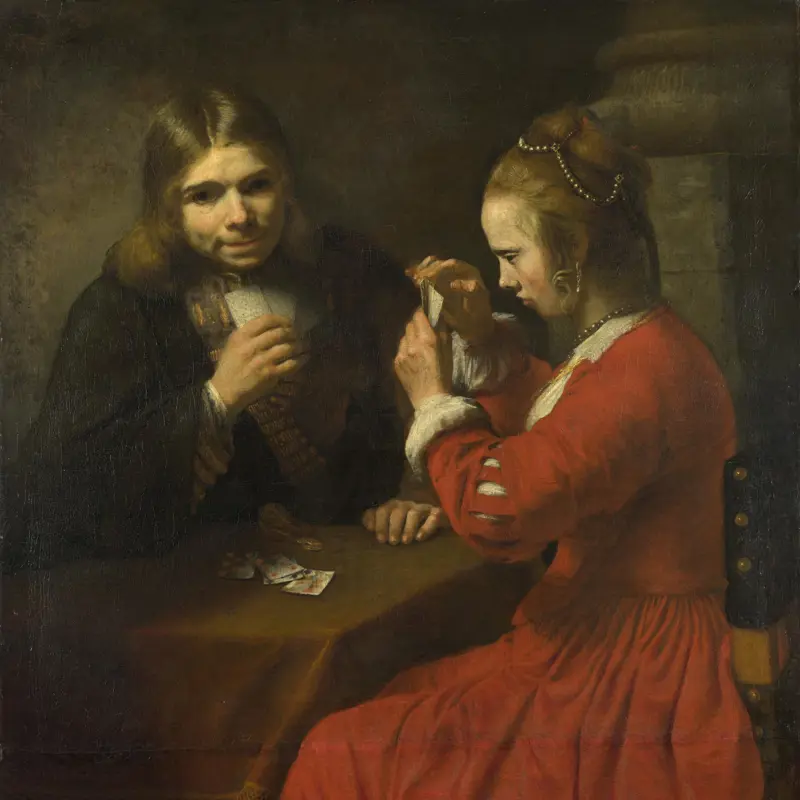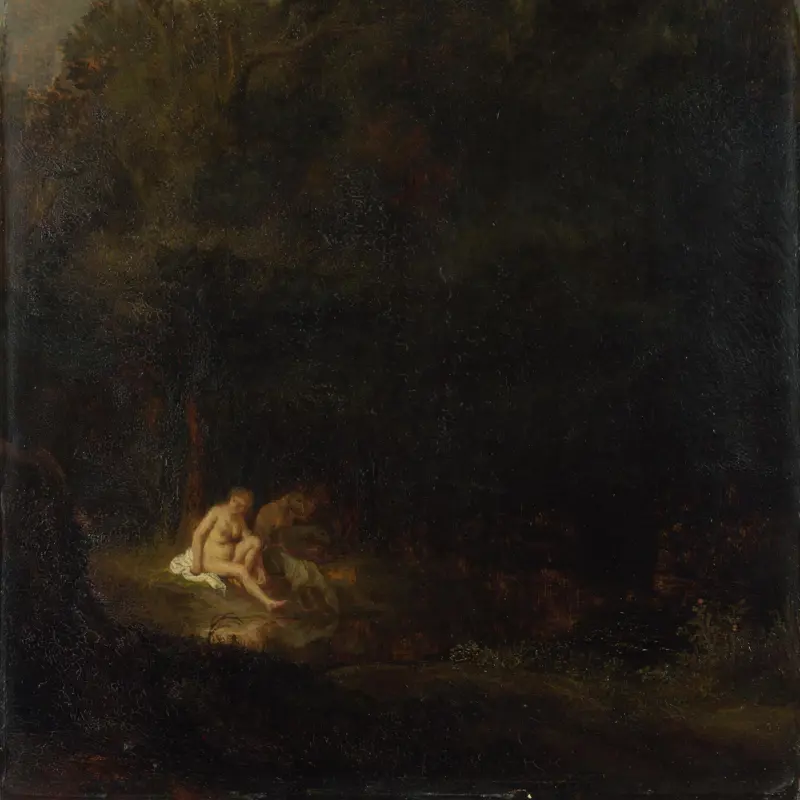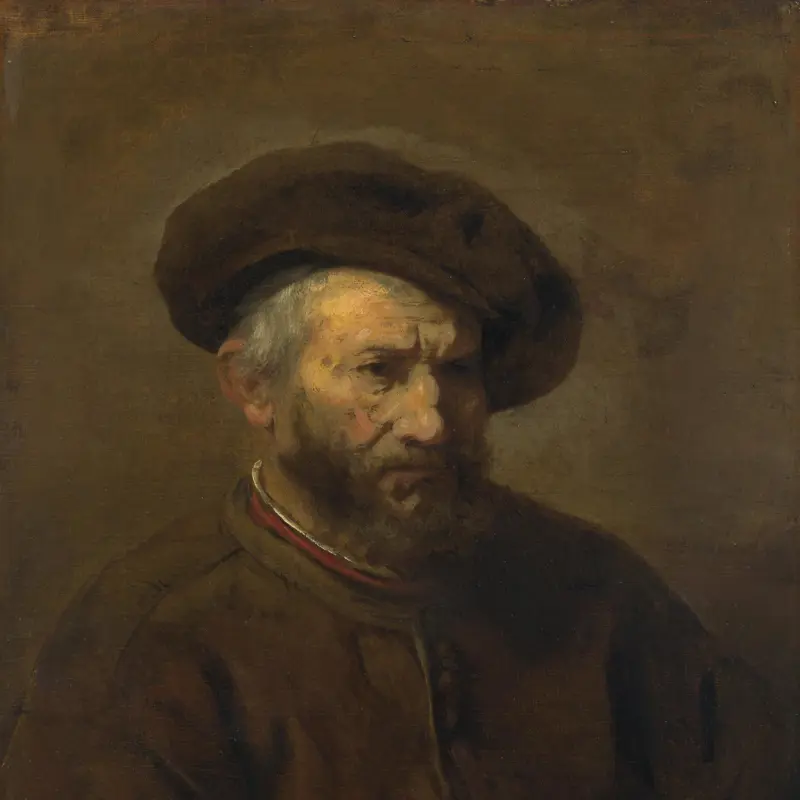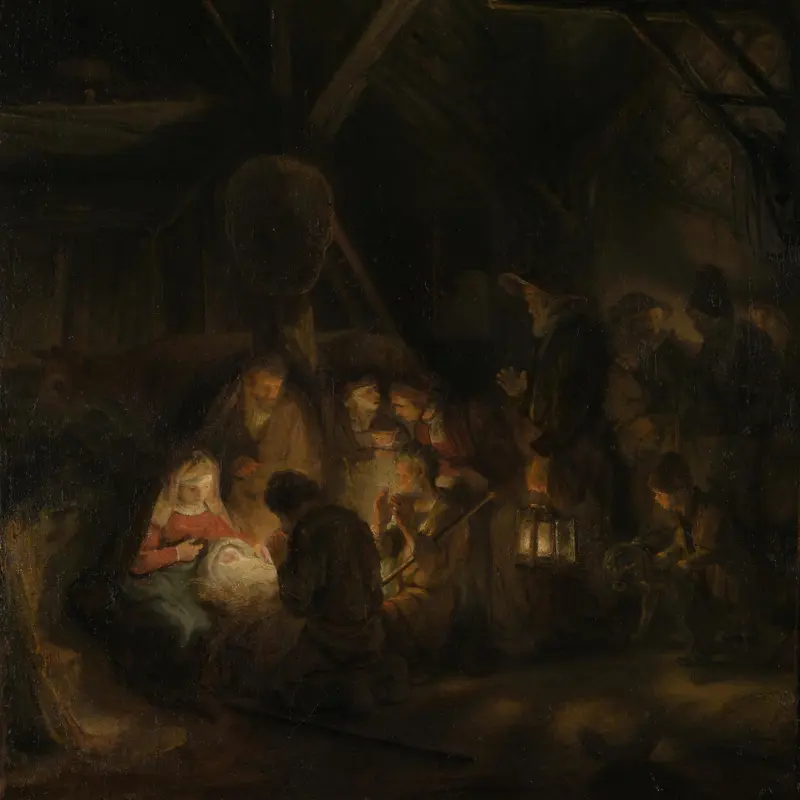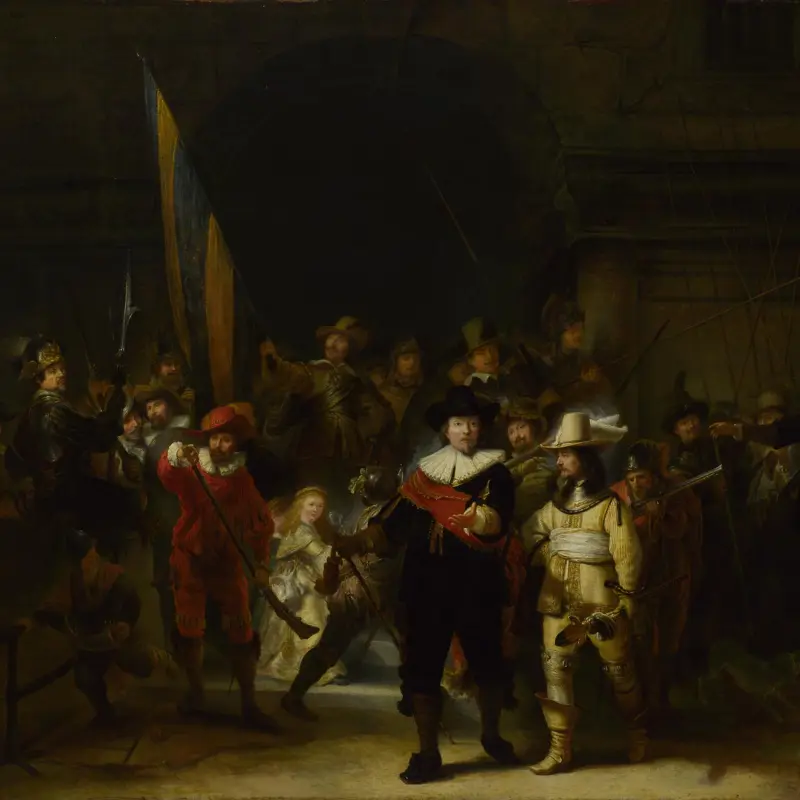Rembrandt, 'Anna and the Blind Tobit', about 1630
About the work
Overview
A cold, grey light creeps through an open window into a room that is itself very old – no glass in the window, a heavy wooden shutter, an open fire with an earthenware pot beside it. The light falls onto an old man. He sits facing into the room, his hands clasped, his head lowered, his face almost lost in shadow. This is Tobit; he sits near his wife Anna, who winds wool on a frame. An apocryphal story tells us that Tobit was a good and holy man but that God made him blind to test his faith.
The old couple await the return of their son Tobias, who has gone to collect money owed to Tobit in order to relieve their poverty. After many adventures Tobias returns, bringing a miraculous cure for Tobit’s blindness. Rather than the miracle, Rembrandt has chosen to celebrate the age, patience and faith of the old man and woman while they wait.
Key facts
Details
Provenance
Additional information
Text extracted from the ‘Provenance’ section of the catalogue entry in Neil MacLaren, revised and expanded by Christopher Brown, ‘National Gallery Catalogues: The Dutch School: 1600–1900’, London 1991; for further information, see the full catalogue entry.
Exhibition history
-
2014Loan to Kenwood HouseKenwood House (English Heritage)15 October 2014 - 17 May 2015
-
2017Rembrandt: Lightening the DarknessNorwich Castle Museum & Art Gallery21 October 2017 - 7 January 2018
-
2019Young RembrandtStedelijk Museum De Lakenhal1 November 2019 - 9 February 2020The Ashmolean Museum of Art and Archaeology27 February 2020 - 1 November 2020
-
2022Fruits of the Spirit: Art from the HeartThe National Gallery (London)November 2022 - 9999
Bibliography
-
1829
J. Smith, A Catalogue Raisonné of the Works of the Most Eminent Dutch, Flemish, and French Painters: In Which is Included a Short Biographical Notice of the Artists, with a Copious Description of Their Principal Pictures […], 9 vols, London 1829-1842
-
1907C. Hofstede de Groot, Catalogue Raisonné of the Works of the Most Eminent Dutch Painters of the Seventeenth Century, 10 vols, London 1907
-
1907C. Hofstede de Groot, Catalogue Raisonné of the Works of the Most Eminent Dutch Painters of the Seventeenth Century, 10 vols, London 1907
-
1926C.J. Holmes, 'Tobit and His Wife, by Rembrandt and Gerard Dou', The Burlington Magazine, XLIX, 1926, pp. 55-61
-
1953L. Münz, 'Rembrandts Bild von Mutter und Vater', Jahrbuch der Kunsthistorischen Sammlungen in Wien, L, 1953, pp. 141-90
-
1953J.G. van Gelder, 'Rembrandts vroegste ontwikkeling', Mededelingen der Koninklijke Nederlandse Akademie van Wetenschappen afd Letterkunde, XVI/5, 1953, pp. 273-300
-
1960Maclaren, Neil, National Gallery Catalogues: The Dutch School, 2 vols, London 1960
-
1966J. von Rosenberg, S. Slive and E.H. ter Kuile, Dutch Art and Architecture 1600-1800, Harmondsworth 1966
-
1990R. Baer, Dissertation on Dou, Dissertation, Institute of Fine Arts, New York 1990
-
1991Maclaren, Neil, revised by Christopher Brown, National Gallery Catalogues: The Dutch School, 1600-1900, 2nd edn (revised and expanded), 2 vols, London 1991
-
1991C. Grimm, Rembrandt selbst: Eine Neubewertung seiner Porträtkunst, Stuttgart 1991
-
1991W. Liedtke, 'Letter from Berlin, Rembrandt at the Altes Museum', Apollo, CXXXIV, 1991, pp. 356-8
-
1991C. Brown, J. Kelch and P.J.J. van Thiel, Rembrandt: The Master and his Workshop (exh. cat. Gemäldegalerie SMPK at the Altes Museum, 12 September - 10 November 1991; Rijksmuseum, 4 December - 1 March 1992; The National Gallery, London, 25 March - 24 May 1992), New Haven 1991
-
1991J. Held, 'Rembrandt and the Book of Tobit', in J. Held, Rembrandt Studies, Princeton 1991, pp. 118-43
-
1994C. Tümpel, Im Lichte Rembrandts: Das Alte Testament im Goldenen Zeitalter der niederländischen Kunst (exh. cat. Westfälisches Landesmuseum, 11 September - 20 November 1994), Zwolle 1994
-
2001
C. Baker and T. Henry, The National Gallery: Complete Illustrated Catalogue, London 2001
-
2022S. Avery-Quash and A. Lepine (eds), Fruits of the Spirit: Art from the Heart, London 2022
About this record
If you know more about this work or have spotted an error, please contact us. Please note that exhibition histories are listed from 2009 onwards. Bibliographies may not be complete; more comprehensive information is available in the National Gallery Library.

